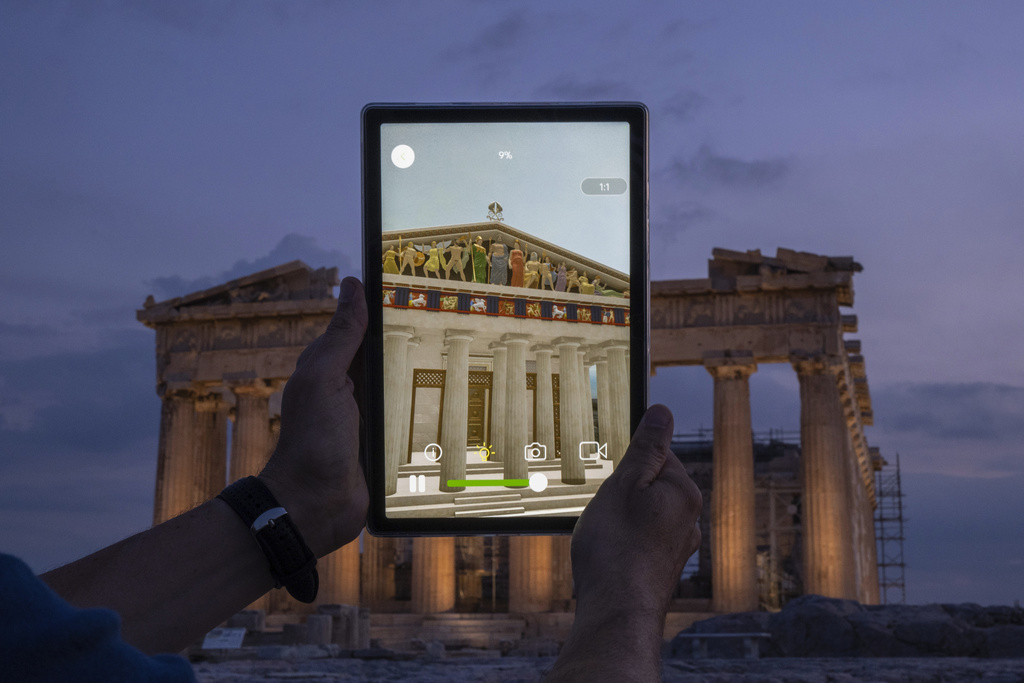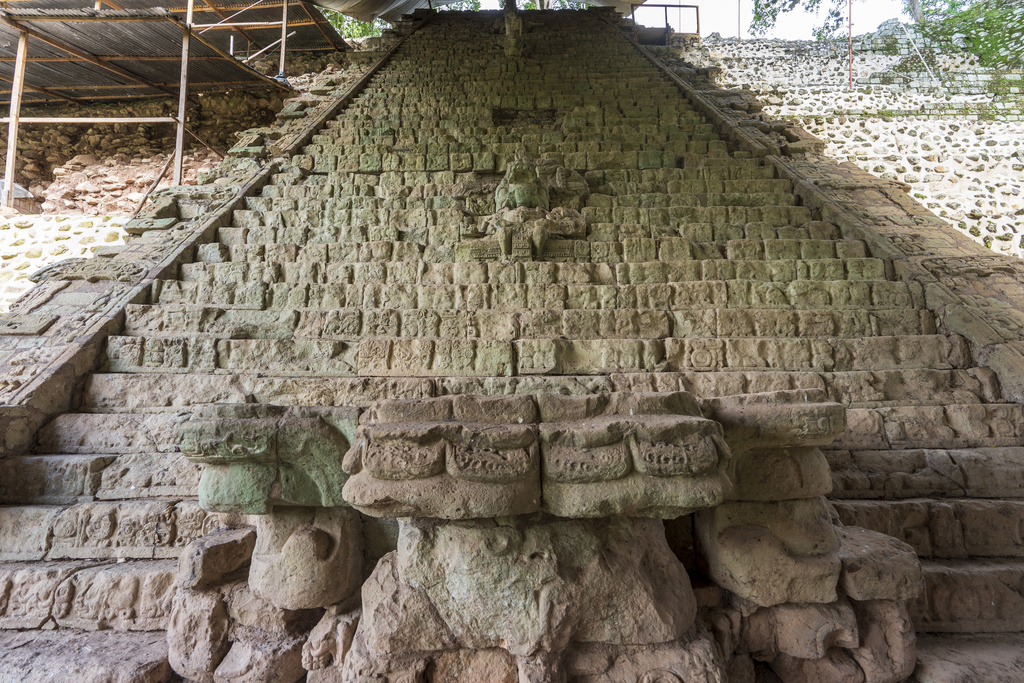View time : 1 min 34
Level : Intermediate
View time : 1 min 34
Level : Intermediate
Read time : 4 mins
Level : Intermediate

By DEREK GATOPOULOS and THEODORA TONGAS Associated Press
ATHENS, Greece (AP) — Tourists at the Acropolis this holiday season can witness the resolution of one of the world’s most heated debates on cultural heritage.
All they need is a smartphone.
Visitors can now pinch and zoom their way around the ancient Greek site, with a digital overlay showing how it once looked. That includes a collection of marble sculptures removed from the Parthenon more than 200 years ago that are now on display at the British Museum in London. Greece has demanded they be returned.
For now, an app supported by Greece’s Culture Ministry allows visitors to point their phones at the Parthenon temple, and the sculptures housed in London appear back on the monument as archaeologists believe they looked 2,500 years ago.
Other, less widely known features also appear: Many of the sculptures on the Acropolis were painted in striking colors. A statue of goddess Athena in the main chamber of the Parthenon also stood over a shallow pool of water. Continue reading
Read time : 3 mins
Level : Advanced

By MAE ANDERSON AP Business Writer
NEW YORK (AP) — The Lexington Candy Shop in New York City has served burgers, fries and shakes to hungry patrons for decades. Last remodeled in 1948, the diner is the definition of old-fashioned.
But that hasn’t stopped it from getting a wave of new fans.
In August 2022, this old school business met the new world when Nicolas Heller, a TikToker and Instagrammer with 1.2 million followers known as New York Nico, popped in for a traditional Coke float – Coke syrup, soda water and ice cream. Naturally, he took a video. It went viral, garnering 4.8 million likes.
“The next day (after the video was posted), the lines started forming at 8 in the morning,” John Philis, the diner’s third-generation co-owner, recalls with amazement. “And it was like, huh!” Continue reading
View time: 1 min 51
Level : Advanced
View time : 1 min 34
Level : Intermediate
Read time : 4 mins
Level : Intermediate

By Franklin Schneider | Wealth of Geeks undefined
In a polarized society, it’s no surprise Americans are divided on the best places to live in the United States. Many top destinations have just as many detractors as fans.
A new study by real estate company Home Bay, in partnership with Allied Van Lines, asked 1,000 respondents where they do and do not want to live, as well as places they consider over and underrated. As expected, the results revealed many split opinions.
San Francisco, for example, was the sixth-most desirable place to live but the seventh most undesirable place to live. New York City was considered the fourth most desirable city, the fifth most undesirable city, and the most overrated city.
However, there were some clear winners and losers. Continue reading
View time: 2 min 19
Level : Advanced
Read time : 4 mins
Level : Advanced

By MADDIE BURAKOFF AP Science Writer
NEW YORK (AP) — In the quest to build better for the future, some are looking for answers in the long-ago past.
Ancient builders across the world created structures that are still standing today, thousands of years later — from Roman engineers who poured thick concrete sea barriers, to Maya masons who crafted plaster sculptures to their gods, to Chinese builders who raised walls against invaders.
Yet scores of more recent structures are already staring down their expiration dates: The concrete that makes up much of our modern world has a lifespan of around 50 to 100 years.
A growing number of scientists have been studying materials from long-ago eras — chipping off chunks of buildings, poring over historical texts, mixing up copycat recipes — hoping to uncover how they’ve held up for millennia.
This reverse engineering has turned up a surprising list of ingredients that were mixed into old buildings — materials such as tree bark, volcanic ash, rice, beer and even urine. These unexpected add-ins could be key some pretty impressive properties, like the ability to get stronger over time and “heal” cracks when they form.
Figuring out how to copy those features could have real impacts today: While our modern concrete has the strength to hold up massive skyscrapers and heavy infrastructure, it can’t compete with the endurance of these ancient materials. Continue reading
